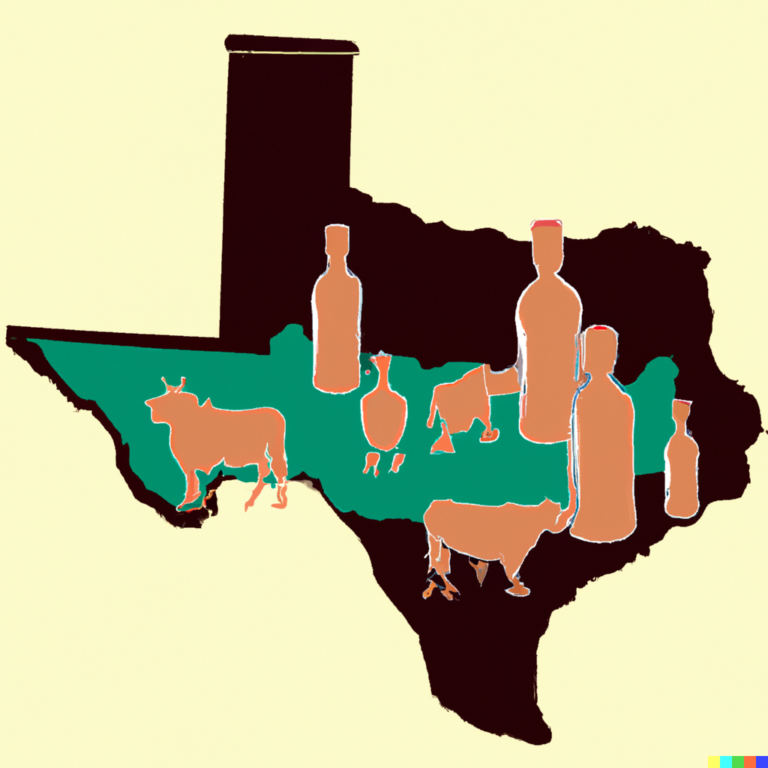
Texas, the expansive and iconic state known for its rugged individualism, oil, and cattle, has been making waves in an industry few would have once associated with it: the production of beer, wine, and spirits. Over the past few decades, the Lone Star State has become a formidable player in this sector, steadily encroaching on the traditional strongholds of California’s wine country and Kentucky’s bourbon trail. Here’s a closer look at this growing industry and the factors propelling Texas to the forefront of the alcoholic beverage scene.
1. Spirits: The Bourbon Battle and Beyond
Kentucky, with its rich history of bourbon production, might have viewed Texas as an unlikely challenger. However, the warm Texan climate has proven advantageous for whiskey aging, giving unique flavor profiles in a shorter period. Distilleries like Garrison Brothers and Balcones have received numerous awards, positioning Texas as a legitimate contender in the world of spirits. Beyond bourbon, Texas has seen growth in rum, vodka, and even agave spirits, further diversifying its alcoholic portfolio.
2. Wine: From Underdog to Contender
Texas’ wine industry has experienced perhaps the most remarkable transformation. It wasn’t too long ago that few could name a Texan wine, but today, the state boasts more than 400 wineries. The Texas Hill Country, spanning from Austin to Fredericksburg, is now the second most visited wine region in the U.S., trailing only behind Napa Valley.
The terroir, or natural environment in which the wine is produced, shares several similarities with famous wine-producing regions in Spain and Portugal. As a result, Texas wines like Tempranillo have gained recognition and have even been compared favorably to their European counterparts. This burgeoning wine industry has not only drawn tourists but has also forced sommeliers and wine enthusiasts to recognize Texas as a genuine competitor to California’s dominance.
3. Beer: Beyond the Lone Star Legacy
Traditionally, when one thought of Texan beer, it was the Lone Star label that might come to mind. Today, however, craft breweries are sprinkled throughout Texas, from bustling metropolises like Austin to the picturesque hill country towns. The craft beer movement has seen a significant boost, with Texan breweries winning awards on national stages. These accolades have driven more beer enthusiasts to take Texas seriously. Cities like Austin and San Antonio are even promoting beer tourism, offering tours of local breweries and fostering events such as beer tastings and festivals.
The Secret Sauce: Innovation and Authenticity
Several factors contribute to Texas’ alcoholic beverage renaissance. Innovation is at the heart of this growth. Texan producers aren’t merely replicating what’s done in California or Kentucky; they’re creating products that resonate with the Texan identity. Whether it’s using blue corn in bourbon or experimenting with grape varieties that thrive in the Texan climate, there’s a genuine drive to offer something different.
Additionally, there’s an inherent authenticity to Texan products. The state prides itself on its “Texas-made” ethos, and this translates into the beverage industry. Consumers recognize and appreciate this genuineness, leading to a strong local market which then radiates outward.
Conclusion
The growth of the beer, wine, and spirits industry in Texas isn’t just about economics or producing more bottles. It’s a narrative of a state rediscovering its agricultural roots and leveraging its unique climate, culture, and spirit of innovation to challenge established giants in the sector. While California and Kentucky will always hold a revered place in the alcoholic beverage world, Texas is carving out its niche, showing that there’s room for a Lone Star on the global stage.
